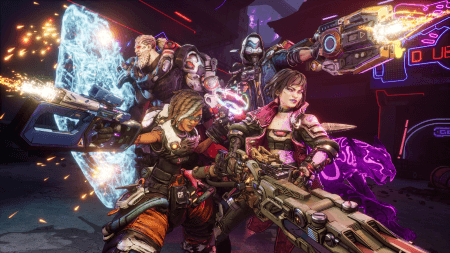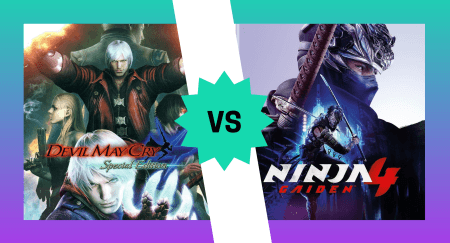Enter the Double Dragons
Double Dragon Gaiden: Rise of the Dragons has some stiff competition right now. With multiple bold, fresh releases in beloved franchises, 2D-arcade beat ’em up games are in the midst of a renaissance.
In 2019, River City Girls came out of nowhere with its charming style and complex fighting system. Streets of Rage 4 entered the streets the next year with a damn-near-perfect follow-up that celebrated and revitalized my favorite franchise in the genre. And Teenage Mutant Ninja Turtles: Shredder’s Revenge delighted me with its colorful, chaotic, and nostalgic gameplay.
But none of these games, as fantastic as they are, would exist without the influence of the Double Dragon franchise, which first hit arcades in 1987. However, times have changed.
With an increasingly crowded genre full of excellent 2D beat ‘em ups, developer Secret Base needed to strike a delicate balance and refresh the franchise without straying too far from the original formula. Double Dragon Gaiden, published by Modus Games and Joystick, boldly adopts a new fighting stance with risks that ultimately pay off for an explosive, albeit brief, and addictive roguelike experience. However, the game is held back from its full potential with its overall lack of features.

Nuclear New York
Double Dragon Gaiden: Rise of the Dragons takes place during the year 19,9XX in a nuclear-war-ravaged New York City. What’s left of the city is divided up by four gangs: the Killers, the Royals, the Triangle, and the Okada clan, each of which has an elaborate hideout. The streets overflow with violence.
One day, a mysterious man enters the Sōsetsuken dojo holding an unconscious Marian, a longtime series love interest and playable character. Brothers Billy and Jimmy Lee, the titular Double Dragons, immediately demand to know what happened. The man introduced himself as the new mayor of the city and that Marian had been attacked by gang members. He then said he was seeking out the dojo’s leader, Master Lee, to help bring law and order to the city.
Uncle Matin, the caretaker for the brothers and the dojo, explains that Master Lee has been missing and that he’s watching over the dojo and the brothers, who are Master Lee’s disciples. Uncle Matin declines the mayor’s invitation, but Billy, Jimmy, and a now-conscious Marian convince him to let them join the mayor in cleaning up the streets. The four then set out to administer some good old-fashioned street justice and take down the gangs.
Double Dragons and Friends
Double Dragon Gaiden has two main modes: solo tag or local co-op (online co-op will be added later). You can choose which mode you want and adjust the game’s difficulty with sliders that raise or lower the costs of tokens and reviving KO’d characters.
The game has 13 playable characters, starting with Billy, Jimmy, Marian, and Matin. You unlock the others through the game’s token shop (which I will touch on later).
After you pick your duo, and select one of the four hideouts, you’ll come across the game’s first point of division between newcomers and longtime Double Dragon fans: the game’s ’90s-anime pixel-art aesthetic.
Personally, I loved the art style. I found the chibi characters bright, colorful, and adorable—a stark contrast to the endless cans of whoop ass you’ll be opening the whole time. Character designs and animations are smooth but hit hard, and vivid environmental sprite art creates some unique hideout designs, like a trash cube pyramid or an underground casino with hidden doors. In addition, you’ll have some damn good music pumping you up the entire time with Double Dragon’s classic arcade game soundtrack, which features catchy ’80s pop, ’90s rock, techno, and old-school hip-hop tunes.
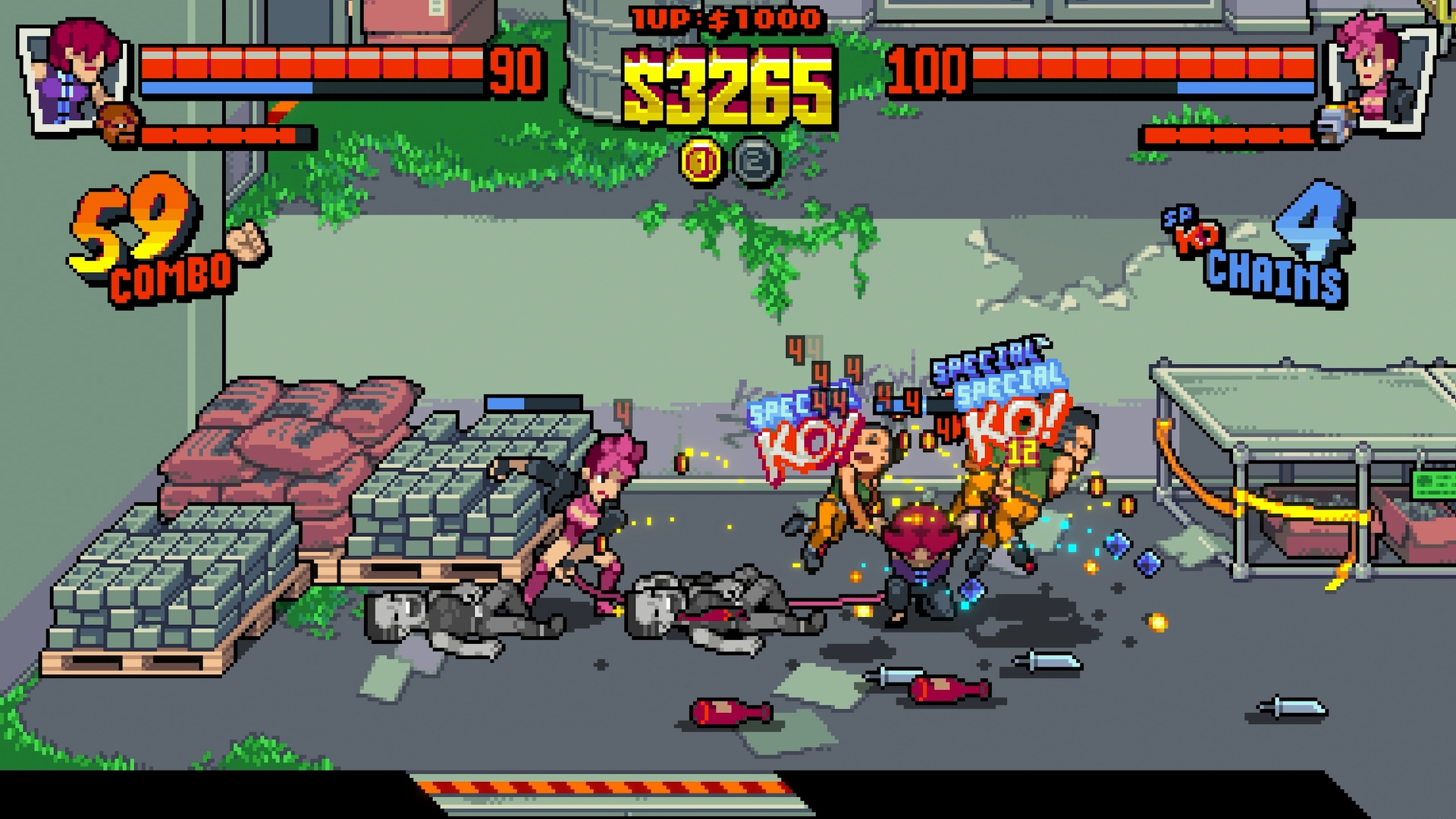
Fighting Rogues… Roguelike Style
You’re free to start with whatever hideout you want, which is nice. But once you beat a sector or gang leader, the game’s roguelike elements come into play. The first level you pick in your run will be the shortest and easiest, with standard gang members mostly using slow, three-hit combos. But after you defeat the gang boss, the game ramps up the difficulty.
The other hideouts upgrade the experience with more sectors, more bosses, and more mercenaries. The standard enemies become tougher, hit harder, and are more aggressive. New types of enemies—ranging from robot dogs to ninjas—appear armed with guns, dynamite, swords, hammers, pipes, and other weapons to bash your face in. Other enemies mix it up with more unique acrobatic attacks or charge right through yours with super armor. The gang leaders gain new moves and appearances as well.
In later levels, it can get very easy to get overwhelmed by the number and variety of types, making spacing and managing your special meter key to survival. These sequences can be tough, but they rarely feel unfair.

Earning Cash and Taking Names
Cash rules everything around this game, and there’s plenty of money to be made. Money can be found in destructible items within each hideout. In addition, you’ll earn bounties when you take out bosses and mini-bosses with special KOs. You can add even more cash to your pockets by meeting certain requirements, like bringing your combo count to 60 hits, defeating 25 enemies with special moves, or beating up groups of three or more enemies 15 times.
You can choose to purchase upgrades for your character’s stats through a random assortment of options after you complete a sector, such as increasing the damage of your running or jumping attack. Some upgrades improve your overall speed and combo strength, while others allow you to gain a small bit of health back with your attacks or take less damage when your special meter is full.
The player can also purchase tokens, which serve two primary functions: You can spend one to revive your characters and continue your run, or you can save them to unlock additional characters, game tips, art, and music in the store. You can’t take the money with you after a run, but you can keep the tokens. This system is what ultimately extends Rise of the Dragons’ replayability in an otherwise short story mode with limited gameplay options.
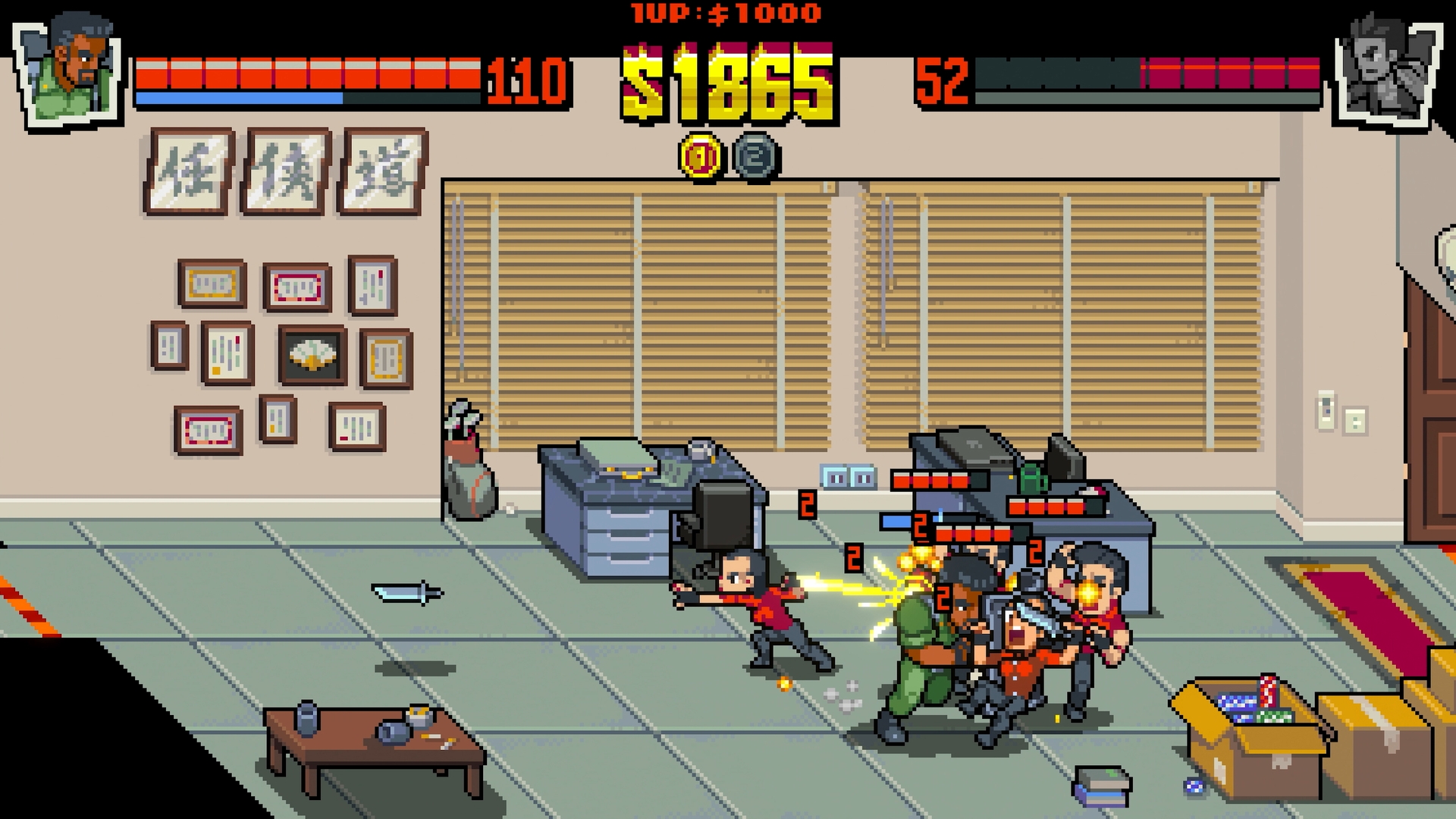
Combat in Double Dragon Gaiden: Rise of the Dragons, Explained
Every punch and kick carries a satisfying amount of weight in Double Dragon Gaiden’s deep, free-flowing combo system. Each character has a distinct play style with unique specialties and abilities. Billy and Jimmy use their high-flying, stylish Sosetsuken style, and can wield various weapons. Other characters, like Marian and Uncle Matin, come equipped with their guns, shields, staffs, and swords, or just aren’t allowed to use other weapons.
Characters have two types of attacks: hits and knocks. Hits are your standard combo attacks, and knocks come at the end of combos or dash combos and can knock enemies into the air. Certain enemy types can absorb your hits but are vulnerable to your knocks.
When playing solo tag mode, you can tag your partners in and out, Marvel vs. Capcom style. When they appear, they perform a specific air attack that extends your combo chain. Each character’s entrance attacks are different and offer an extended variety of combo setups.
Like MvC, there’s a small amount of recoverable damage when you tag your partner out, which slowly replenishes over time. This system forces you to strategize which character you should use, save, or heal at any given time. When your health is full and you pick up healing items, which can be found in destructible items in the environment or appear after defeating three or more enemies with a special attack, the health is converted into cash.
I’ll Take a Combo Meal
Each character has four different special attacks, which are tied to a special meter that recovers over time. Tagging in your partner also uses some of the special meter. Early on, special attacks—which are powerful and key to crowd control—should be used wisely because your special meter decreases quite a bit with each use. The recovery speeds up when you attack or defeat enemies. When used properly, the special meter allows you to chain multiple special attacks together, setting up multiple special KOs.
The upgraded attacks have different properties beyond adding more damage. Some make enemies bounce off each other, setting up juggles. Juggling is a huge part of the core gameplay loop, with each character being equipped with at least one move that can knock an enemy off the ground and into the air to extend combos.
I would’ve preferred that Double Dragon Gaiden: Rise of the Dragons introduce the complexities of its fighting system through a tutorial section or allow you to practice and experiment in a training mode. Instead, tips and finer details about the gameplay and fighting system (like the fact that jumps have invulnerability at start-up) are locked behind a token paywall.
This felt like an unsatisfying tactic to pad out the game’s length, keeping you ignorant as you try to adjust to the learning curve. It can take some time, but once you learn each character’s moves and how to manage your special meter, the gameplay loop opens into an addictive system that’s sure to create some inventive combo videos on YouTube.
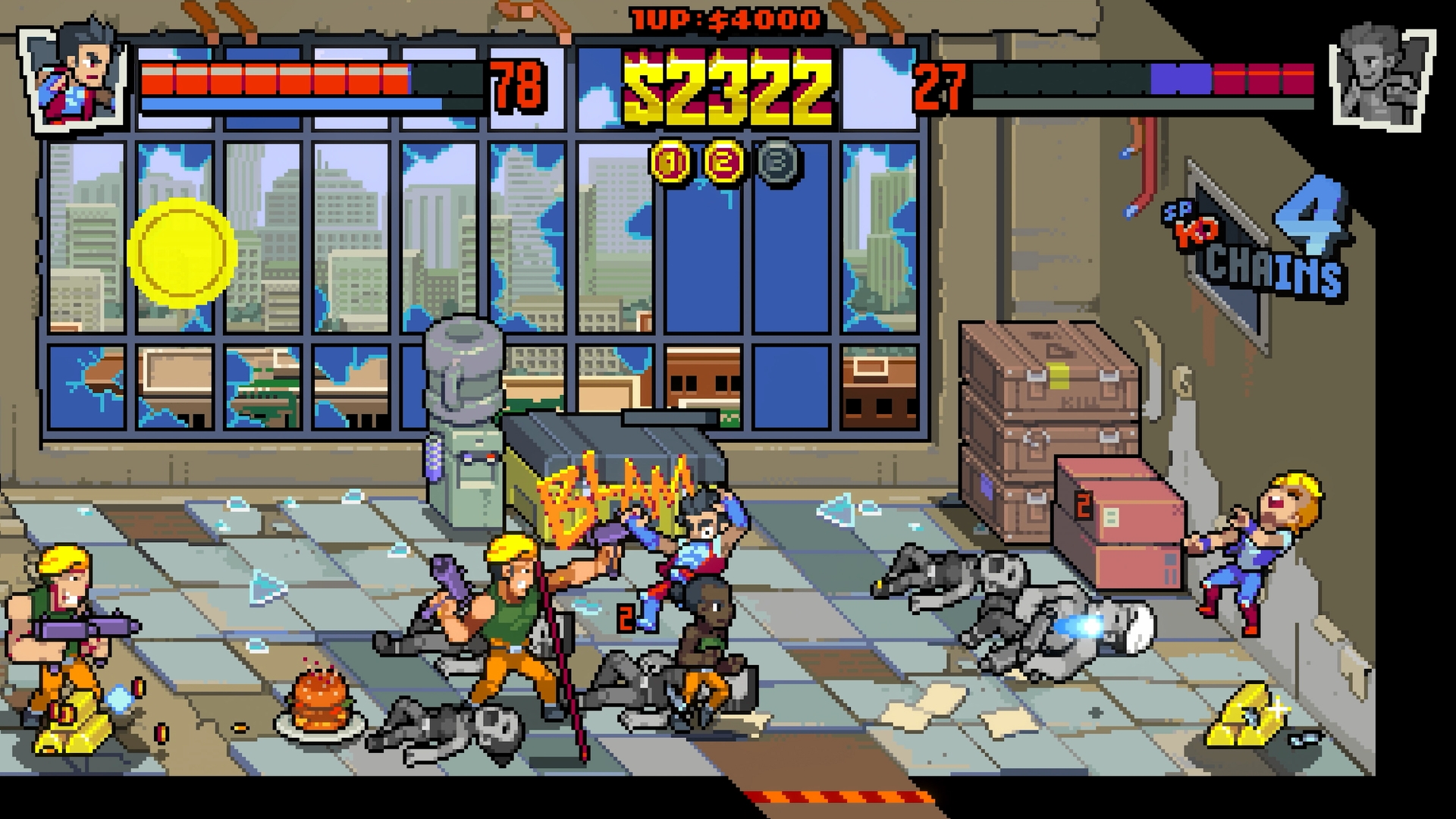
Final Thoughts
Double Dragon Gaiden: Rise of the Dragons succeeds in standing out from its peers with the implementation of roguelike mechanics, a stylish and deep combat system, and a wide variety of playable characters armed with unique fighting styles. However, its lack of a training mode, tutorial mode, or versus mode (all modern-day beat ’em up staples) or any real gameplay innovations makes for a somewhat quick and empty experience.
I have hope that Secret Base will continue to add more gameplay modes, characters, and hideouts over time. Still, the absence of these features, not to mention the lack of online co-op at launch, holds Double Dragon: Gaiden back from reaching the same level of excellence as other recent beat ’em up revivals. Even so, the Double Dragons are back and more than capable of putting up a fight.
Score: 8.5/10
Donovan is a lifelong gamer with a love for fast-paced, single-player action games—especially Devil May Cry, Metroidvanias, indies, and action RPGs. He’s also an “advanced scrub” at fighting games and will play just about anything fun. Donovan is passionate about seeing more diverse characters and creators in the industry—or at least better hair options for Black people. With over a decade in journalism, he joined The Punished Backlog in 2023 to write more about what he loves. Follow him on Twitter and Instagram @dono_harrell.










